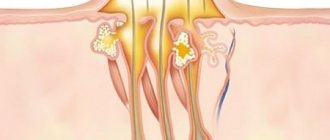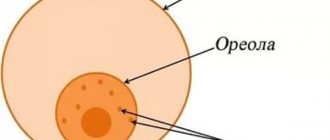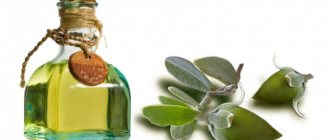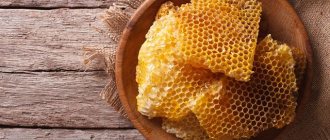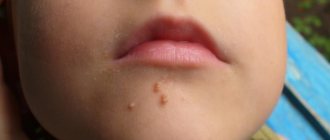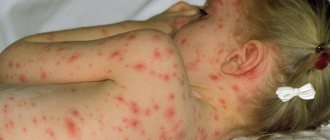With age, facial skin changes become noticeable. The dermis gradually loses its elasticity, wrinkles form on it, pigment spots, scars, and scars appear after various injuries. People strive to rejuvenate their skin and restore its tone in various ways.
In modern medicine and cosmetology, laser resurfacing is often used. This procedure is necessary for rejuvenating the dermis, treating scars, post-traumatic scars, and post-acne scars. Laser resurfacing is considered the only way to treat acne scars.
Concept of method
Laser resurfacing refers to modern methods of dermal rejuvenation, which is carried out using medical lasers. What is the essence of the procedure? The laser beam evaporates the surface layers of the epidermis, thus leveling the relief.
Laser resurfacing helps reduce the external manifestations of scar changes and deformations of the dermis. When carrying out the procedure, the exact dosage of depth and treatment area is very important.
The concept and essence of the method are discussed in this video:
Its types
Epithelial treatment is carried out using two different types of laser:
- Erbium . This type of laser is considered more gentle to use. Its rays penetrate to a shallow depth, causing mild thermal injury to the dermis. At the same time, postoperative rehabilitation is significantly reduced. The number of postoperative complications is also significantly reduced.
- Carbon dioxide (CO2) . This type of laser is considered more aggressive towards the tissue being treated. The rays penetrate deeper, heating strongly and evaporating the water. The main principle of the procedure is to stimulate the natural production of collagen. This substance is necessary for complete renewal of the epidermis, increasing its elasticity, smoothing wrinkles, and correcting post-acne scars.
The mechanism of laser skin rejuvenation using ablative CO2 lasers:
1. Superficial evaporation of the skin (vaporization) helps remove abnormal skin pigmentation, keratosis, smooth out wrinkles, and scar deformities. 2. The thermal effect of the laser on tissue stimulates the post-traumatic release of growth factors and the infiltration of the damaged area by fibroblasts. The onset of the reaction is accompanied by increased activity of the cellular elements of the dermis (fibroblasts). Collagen fibers are destroyed by fibroblasts through fibroplasia due to a set of special enzymes (collagenase and non-lysosomal neutral proteinases), followed by the synthesis of extracellular proteins - collagen and elastin and renewal of the dermal matrix. The consequence of these processes is skin tightening by 20–25%. The main absorber for laser radiation in the mid- and far-infrared range is tissue water, and all processes of laser interaction with the skin are regulated by the absorption of the water components of the dermis. Carbon dioxide (10,600 nm) and erbium (2940 nm) lasers are mainly used to renew the surface of the skin. There are differences in their interaction with tissue: the CO2 laser, in addition to ablation, produces a pronounced deep thermal effect, the Er:YAG laser acts exclusively as an ablative tool.
In recent years, laser techniques using gentle treatment parameters have been increasingly being introduced to rejuvenate the skin. Nevertheless, the CO2 laser, according to the majority of domestic and foreign medical practitioners, remains the most effective tool for correcting pronounced age-related skin changes.
The advantages of certain technologies consist of two main components: efficiency and rehabilitation time. In terms of the effectiveness of correcting pronounced signs of aging, the CO2 laser is the undisputed leader, but its use requires a relatively long period of rehabilitation (which can be considered its main disadvantage). A clear understanding that each laser has its own specific “niche” - the optimal ratio of efficiency and compliance, significantly expands our capabilities and allows us to differentiate in each case the most effective technique that provides the desired results and at the same time takes into account the patient’s time capabilities.
Advantages and disadvantages
Laser resurfacing is no longer something extremely unique for people. At the same time, this cosmetic procedure has a number of advantages. They are presented:
- Affordable cost of the procedure.
- Short duration.
- Gentle treatment of the dermis.
- The presence of a slight recovery period.
- Alignment of the epithelium relief.
- Visible effect a week after the procedure.
- Elimination of pigment spots.
- No thinning of the dermis.
- Targeted treatment of scars, stretch marks, post-acne.
- Rejuvenation of any part of the body (lower/upper eyelid, décolleté, hands, neck, inner surface of legs, arms, genital area).
- The effect lasts up to 3 – 4 years.
The advantages of the erbium laser are:
- Gentle effect on the dermis.
- The procedure is almost completely painless.
- Reduction of the rehabilitation period by half compared to the use of a SC2 laser.
- The absence of demarcation lines at the border between treated and untreated surfaces of the epidermis.
- Possibility of using a laser to treat thin, dry dermis.
- Distinct lifting effect.
- A small number of contraindications (pregnancy, inflammation of the epidermis).
Advantages and disadvantages of chemical peeling
If you study reviews of facial resurfacing left by specialists who work with different types of procedures, many are inclined to believe that removing pigmentation, wrinkles and straightening the face after a facelift is best done chemically. It is very simple, affordable for people of all incomes, especially when you consider how much face polishing with modern devices costs. At the same time, surgeons believe that the choice of expensive procedures is not always justified.
But the chemical method has certain disadvantages:
- unexpected scars may occur;
- there is a possibility of changes in facial pigmentation;
- The recovery period lasts about 2 weeks, during which time it is forbidden to use cosmetics.
Cosmetologists use different types of chemicals to carry out this procedure. Their choice depends on how deep penetration is needed. For moderate peeling, products containing trichloroacetic acid in varying percentages are often used.
For medium and deep peeling, a liquid is used, where the main component is Getter's solution, which contains active substances such as phenol and croton oil.
You need to be especially careful with the deep peeling procedure. It should only be done by professionals. Chemical resurfacing can remove layers of skin of varying depths. The stronger the penetration, the fewer wrinkles will remain on the face. But with depth, the time for the recovery period increases, and then you will have to wait for some time until the redness, which lasts for more than one month, goes away.
But in skillful hands, chemical peeling provides an effect comparable to other resurfacing options. At the same time, the patient risks less and pays less.
Indications for testing
Laser resurfacing is prescribed to patients in the following cases:
- the presence of age-related changes in the dermis of the face;
- uneven, dull complexion of the dermis of the face;
- wrinkles on the epidermis;
- stretch marks;
- photoaging of the dermis;
- decreased tone of the epidermis;
- stretch marks on the stomach;
- scarring.
Contraindications to laser facial resurfacing
Face resurfacing has a number of contraindications. This procedure is prohibited when:
- epilepsy;
- inflammatory disease of the dermis (any);
- diabetes mellitus;
- tendency to excessive scarring of the epithelium;
- tuberculosis;
- herpes;
- dry, dehydrated dermis;
- oncological diseases;
- blood clotting disorders;
- presence of a pacemaker;
- pregnancy;
- breastfeeding.
In addition, laser resurfacing is not recommended for people with olive, dark dermis. Peeling lightens the skin, after which it can acquire an unnatural, painful shade.
Photos before and after
Erbium laser
Laser facial resurfacing using this method allows you to influence the skin at a shallow depth - about 1 micron. The main property of this type of laser is cell ablation. If necessary, the doctor can adjust the radiation power and achieve a coagulating effect. Erbium laser radiation is very well absorbed by moisture located in the epidermal layers. Cells stop their life cycle. Vaporization (evaporation) in the affected area occurs so quickly that neighboring areas are not affected at all. In other words, targeted processing is carried out. Laser resurfacing with an erbium laser is also called “cold”.
Preparation for the procedure
To significantly reduce the recovery period, it is necessary to properly prepare for the procedure. Also, proper preparation makes it possible to improve the expected effect.
Before carrying out the procedure, you must consult with a specialist and be examined by a doctor who will perform the peeling. When performing laser peeling, the doctor may also prescribe light chemical peeling of the dermis and antiviral medications.
Preparation for fractional laser rejuvenation consists of the following points:
- 2 weeks before the procedure, intensive UV irradiation procedures should be avoided.
- Avoid taking antispasmodics, painkillers, and anticoagulants a couple of days before dermal rejuvenation.
- The procedure is carried out a couple of weeks after a course of antibiotics, systemic retinoids, hormones, other photosensitizing medications, and plants.
Before resurfacing, the specialist applies a soothing agent to the patient’s dermis, which begins to act after 10 to 20 minutes. When the effect of the sedative has appeared, the procedure itself begins.
How is the procedure performed?
The duration of the procedure in each case is different (15 minutes, 1.5 hours). The duration of grinding is influenced by factors such as the type of laser used and the amount of work performed. Before the procedure, general or combined anesthesia (intravenous) must be performed.
If local laser treatment is to be performed, the patient is given local anesthesia. The upper layers of the dermis, along with wrinkles and scars, are removed. Then repair processes are activated, promoting the formation of new young collagen and elastin.
The operation is performed in a hospital. Sometimes the patient needs to stay in a hospital for 1–3 days. Before the procedure, the doctor gives you a document to sign. The patient is shown the equipment that will be used to treat the dermis and is introduced to the therapy technique itself.
The patient lies down on a special bed, his dermis is cleaned, an anesthetic is applied, and he waits 30–40 minutes for the anesthetic to take effect. After this, the procedure itself begins.
The laser produces the first flashes, during which the patient may feel a slight tingling sensation. In some cases, patients experience severe pain. Perhaps the reason for such pain is the weak effect of the anesthetic drug and the strong sensitivity of the epidermis.
At the end of the laser treatment, bepanten foam is smeared on the face and the patient is left to lie for 5-10 minutes. The patient can go home immediately after the procedure.
This video will tell you about the advantages and disadvantages of this procedure:
Consequences and possible complications
The main problems that a specialist or patient may encounter when performing laser resurfacing are:
- prolonged erythema. It can last for 3 – 4 months after grinding;
- delayed reepithelialization;
- dyspigmentation.
These consequences of the procedure are temporary. More serious complications are atrophic scars and hyperpigmentation of the dermis.
After laser resurfacing, the patient may feel discomfort for several days. In this case, the doctor prescribes special painkillers. There may also be swelling, which will subside over time. Depending on the type of laser and the area being treated, the rate of swelling differs (3 days, 3 weeks).
Sometimes redness of the epidermis may be observed. The procedure can cause the following complications:
- hyperpigmentation. It is more common in patients with dark dermis;
- Excessive scarring. Scars more often occur with increasing pulse duration, number of approaches, and increasing radiation energy;
- infection. Laser resurfacing can awaken bacteria hidden in the epithelium (staphylococci, pseudomonas, candida;
- uneven contours. If resurfacing is carried out on limited areas of the epidermis, a line of demarcation may occur. It goes away with time.
TECHNIQUE FOR ABLATING SKIN RUBBING WITH CO2 LASER
From a practical point of view, lasers operating in superpulse (pulse width from 1 ms to 20 ms) and ultrapulse (pulse width up to 1–3 ms) modes are better suited for laser resurfacing. According to the principle of selective photothermolysis (RR Anderson, JAParrish, 1983), the target (chromophore) heats up less if the duration of the laser pulse is less than the thermal relaxation time (TRT) of the chromophore. (TTR is the period of time during which the target temperature, which increased at the moment of the pulse, will decrease to 50% of the initial level) A pulse duration exceeding the TTR will cause unwanted overheating of the tissue. For water-containing skin components, the TTR is about 1 ms. Accordingly, lasers with pulse durations of less than 1 ms are capable of rapidly vaporizing tissue, leaving a very narrow zone of residual thermal necrosis (up to 100 μm).
All modern carbon dioxide lasers use computerized scanners - CPG (Computer Pattern Generator) - to distribute energy evenly onto the skin. The most effective carbon dioxide laser for skin resurfacing is the ultra-pulse laser UltraPulse Encore (Lumenis, USA), which has the best technical characteristics: maximum peak power when exposed to up to 240 W, entering the tissue in a short period of time - up to 1 ms.
Indications for laser skin resurfacing with a CO2 laser: • photoaging of types III–IV according to the Glogau scale (RG Glogau, 1996); • age-related aging of the skin, manifested by wrinkles of varying clinical severity and loss of elasticity; • eyelid skin defects (laser pseudoblepharoplasty is indicated); • actinic and seborrheic keratosis; • gravitational ptosis of the face (non-surgical facial skin tightening is indicated).
Laser skin resurfacing with a CO2 laser is most recommended for patients aged 40–65 years with fair skin and fairly pronounced static wrinkles. For younger patients with initial signs of photoaging, laser ablation with a CO2 laser is not recommended; it is better to use laser technologies based on fractional exposure, which are sufficiently effective for correction in these cases. Patients should be selected with realistic expectations and who do not insist on complete removal of wrinkles. It is not recommended to use carbon dioxide laser resurfacing in the neck, décolleté and dorsum of the hands due to the high risk of scarring.
Patient preparation
It is necessary to pay close attention to the following points: • A history of recurrent herpetic infection (Herpes labialis and facialis) requires treatment with antiviral drugs (Acyclovir, Famvir, Valtrex) 1–2 days before the procedure and continued therapy until complete re-epithelialization (within 7–8 days). • If there is a history of hypertrophic and keloid scars, laser resurfacing deeper than the papillary dermis should be avoided. • If there is significant drooping or severe laxity of the skin of the lower eyelid, it is not recommended to use aggressive laser resurfacing, so as not to provoke the formation of ectropion (inversion of the lower eyelid). • It is imperative to evaluate the allergy history. Local anesthesia is contraindicated in patients with a true lidocaine allergy. • Laser resurfacing should not be performed in psychologically unstable patients, as they will not be able to adequately withstand the full course of rehabilitation measures and thereby provoke the development of adverse complications.
Contraindications for laser skin resurfacing with a CO2 laser
Absolute contraindications: • pregnancy, lactation; • active bacterial, viral, fungal infection in the area of laser exposure; • presence of human immunodeficiency virus (HIV), hepatitis C; • systemic connective tissue lesions with damage to the skin and subcutaneous tissue (systemic lupus erythematosus, granuloma annulare, discoid lupus erythematosus, scleroderma, dermatomyositis, etc.); • inflated expectations of the patient, lack of compliance, mutual understanding between the patient and the doctor.
Relative contraindications:
• poor general health of the patient; • taking isotretinoin medications within the previous 6 months; • IV-VI skin phototype according to Fitzpatrick; • patient's rejection of the possibility of postoperative erythema or hyperpigmentation; • significant sagging skin of the eyelids; • excessively thick or thin skin; • tendency to develop keloid and hypertrophic scars.
Recovery and care
After the procedure, the patient feels virtually no discomfort or pain. The crusts disappear after 7 - 10 days. During the recovery period, doctors recommend using special ointments and antiseptics. You can return to work after 10–14 days. Redness of the dermis may be noticeable for longer. Decorative cosmetics are allowed to be used. You can return to active activities after 3 weeks, sometimes later.
Recommendations that should be followed after the fractional resurfacing procedure:
- For the first day, it is forbidden to touch the treated areas or get them wet.
- On the second day after the procedure, you are allowed to wash your face with cold water and apply moisturizers. Cold compresses with a wet towel, wiping with ice, and irrigation with thermal water are also welcome.
- For 3–4 days, you should continue to irrigate the treated areas with thermal water. You need to apply moisturizers.
- Forced exfoliation of crusts should not be allowed during the first week.
- It is recommended to exclude UV irradiation of the epidermis for a month. It is necessary to use protective creams against exposure to cold, products containing UV filters.
Rehabilitation period
After laser treatment, the dermis turns red and swells - these symptoms disappear within 10 days. Weeping and crusting also form.
Important! You can't remove the crust. It disappears after 2-3 days. Do not listen to advice about wiping with peroxide or washing under running water. The skin must recover on its own.
Until complete tissue restoration is strictly prohibited:
- be in direct sunlight, visit a solarium;
- use aggressive cleansers containing alcohol, as well as carry out acid peels both at home and in the salon;
- rub or massage your face;
- apply makeup, including using foundation or powder;
- visit a sauna, bathhouse, public swimming pool, and do not take hot baths for a long time.
Compliance with all recommendations and restrictions during the recovery period is the key to successful and safe manipulation.
Skin care tips:
- if pain occurs, use a cream or ointment with an anesthetic (a suitable remedy is prescribed by a doctor);
- After washing your face, it is advisable to blot your face with a disposable napkin rather than wipe it with a towel;
- When going outside, be sure to apply sunscreen;
- To eliminate dryness, tightness or discomfort, use a moisturizer.
Reviews
As for laser resurfacing using carbon dioxide, reviews are mostly positive. Procedure rating 4 out of 5. After the procedure, the skin condition improves significantly, but the effect is noticeable after several months.
Most often, patients indicate a long recovery period, discomfort during the rehabilitation period, severe pain during the procedure, high cost, and the need to perform the procedure multiple times (in the most severe cases, when the skin has many defects).
Sometimes there are negative reviews about the procedure due to the severe pain that must be endured during laser treatment. Also, the pain syndrome makes itself felt for several days after the procedure. Redness and swelling may not go away for several days (up to a week). In addition, laser resurfacing has many contraindications.
A girl will tell you about her experience of laser facial skin resurfacing in this video:
What you need to know about scars
The appearance of scars causes pain on the skin, making it difficult to move the facial muscles. Soreness and unaesthetic appearance cause anxiety and stress.
Even small scars on the face cause a lot of negative emotions. Specialists of modern cosmetology and medicine are concerned with finding effective methods for the prevention, correction and treatment of this problem.
A mechanical wound heals within a year. This is a complex recovery process that ends with the appearance of a scar. Changes in tissues continue after healing, but they all occur slowly and imperceptibly to the eye.
Before you decide whether you will correct your scars with laser resurfacing or some other method, you need to determine the nature of the defect. There are physiological and pathological scarring. In the first case, scars form after injuries. They are pale, almost invisible. Pathological scars are usually large and bright in color.
Treatment should be selected based on the individual characteristics of the damage: the size of the scar, the duration of its existence on the skin, and the nosological form. It is impossible to completely remove scars that have already formed. Correction can significantly reduce damage and smooth the skin. Usually this process is very long.
An advanced modern technique for correcting such defects is laser scar resurfacing.
Let's try to figure out what scars are and why they occur.
By their nature, these are dense formations in the connective tissue of the skin. This defect appears during the healing process of the injuries received. In areas of scar formation, the tissue contains collagen, which is why the scars acquire a special shade. In these areas, the sweat glands and hair follicles will no longer be able to recover. Scars do not change color from exposure to ultraviolet radiation.
Read material on the topic: Atrophic scars on the face - causes of formation and main methods of treatment
Recommendations
- The procedure is recommended to be carried out in the autumn-winter period. The choice of this time of year is explained by the lack of active influence of the sun's rays.
- For patients over 30 years of age, it is advisable to undergo superficial laser resurfacing. The procedure is needed for minor rejuvenation of the epidermis and prevention of aging. After this procedure, collagen will be produced for about 6 months.
- Patients over 35 who notice signs of aging (pronounced pigmentation, deep wrinkles) will need midline fractional laser resurfacing.
Where in Russia can you get such procedures?
In Moscow, procedures are more expensive. They are carried out in the following medical centers:
- "Family doctor".
- "Family Health Center"
- "Reamed."
- State Research Center for Laser Medicine of the Ministry of Health of the Russian Federation.
- Edis Med Co.
- "Delta Clinic"
- "MedCenterService"
- "SM-Clinic".
- "Spectra".
- Frau Klinik.
- "Uniclinic".
As for St. Petersburg, the price for laser peeling is almost the same as in Moscow, and can be done in many clinics:
- "Altermed."
- "Gen87".
- "Body Aesthetics".
- "Versailles".
- "Abrielle" and many others.
You should select a medical center for laser resurfacing after carefully reading patient reviews of the working specialists and the clinic’s rating.
